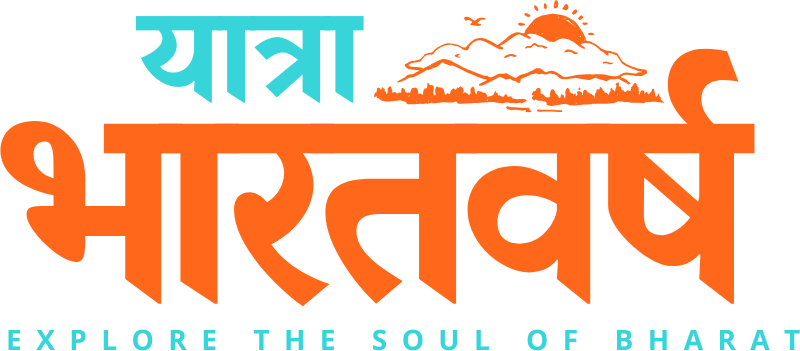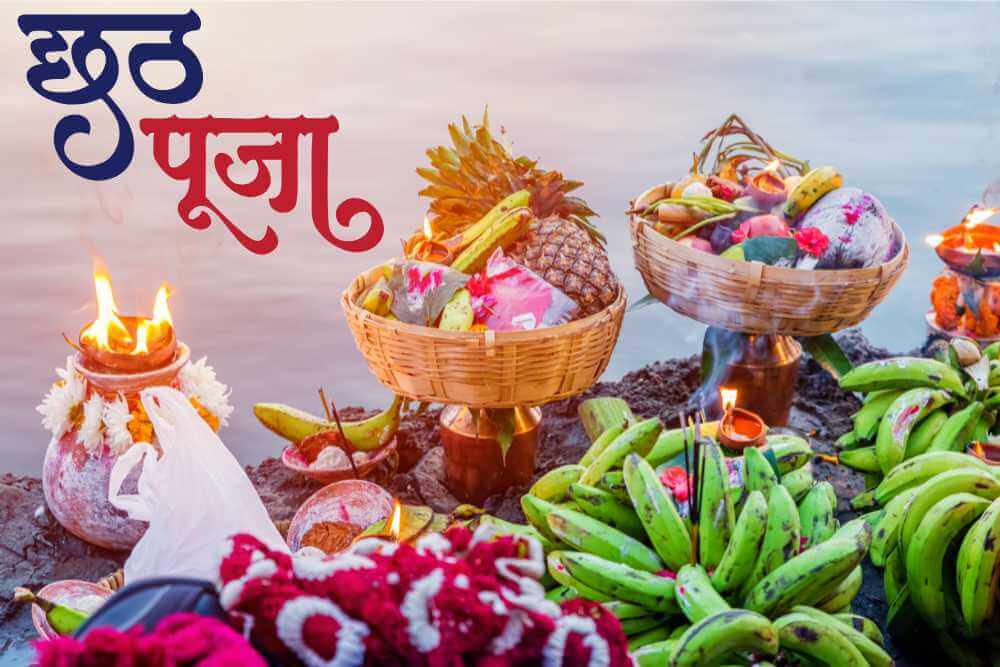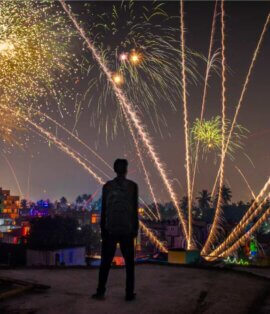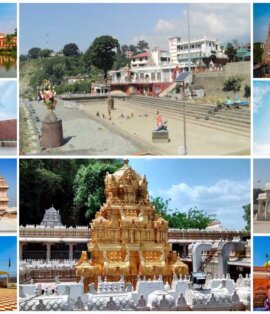Chhath Puja is an ancient and revered festival, particularly in Bihar and its neighboring areas. It holds profound cultural, religious, and spiritual significance. Dedicated to the Sun God and his sister Chhathi Maiya, people observe it with deep devotion. Beyond being a religious event, Chhath Puja is a celebration of life, renewal, and gratitude, making it meaningful for millions.
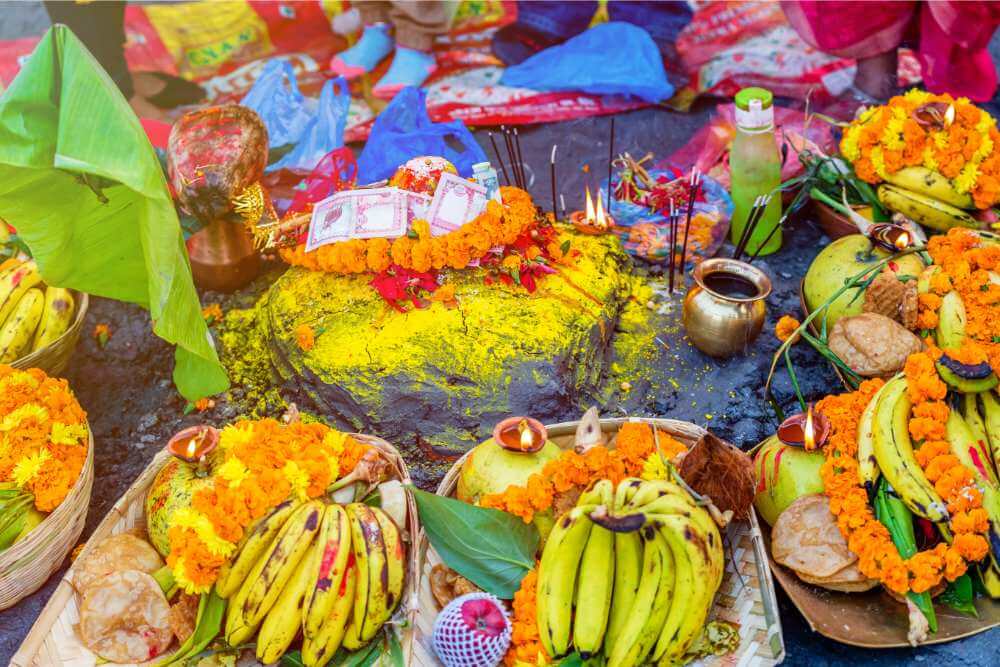
This article explores the origins of Chhath Puja, its rituals, significance, and more, while offering in-depth insights into its observance. By the last paragraph, you’ll know precisely how to participate in this spiritual tradition, with guidance on the Chhath Puja Samagri List, Chhath Vrat Vidhi, and Chhath Puja Prasad. You will also find key elements for observing the festival with intent, along with its timing.
Chhath Puja Background: A Tradition Rooted in Ancient Practices
The origins of Chhath Puja can be traced back to the Vedic era, with references in both the Rigveda and the Mahabharata. The festival primarily celebrates the Sun God, Surya, and his sister, Chhathi Maiya, who is believed to possess the power to heal both body and mind. Just as the Rigveda praised Surya for his life-giving energy and light, today devotees continue to worship the Sun with similar reverence, depicting the festival’s enduring connection to ancient practices. This puja is unique because it is one of the very few occasions in Hinduism that focus on the worship of the Sun, which is considered the source of all life.
Chhath Puja is primarily celebrated in Bihar, Uttar Pradesh, Jharkhand, and parts of Nepal, with increasing participation across India and globally. The migration patterns and urbanization have led to the festival’s broader observance in major cities like Delhi and Mumbai, revealing Chhath’s evolving identity beyond its traditional heartland. Additionally, the diaspora communities in countries such as the United States, United Kingdom, and Canada hold celebrations that underscore the festival’s global flow. The observance includes rigorous fasting, standing in knee-deep water, and offering prayers to the Sun during sunrise and sunset. These rituals symbolize purification and gratitude.
Chhath Puja is a four-day festival that begins on the sixth day after Diwali. This year, it will be celebrated on [Sat, 25 Oct, 2025 – Tue, 28 Oct, 2025]. The event is marked by lively processions, devotional songs, and traditional foods. Essential items for the rituals include fruits, flowers, sugarcane, and special prasad.
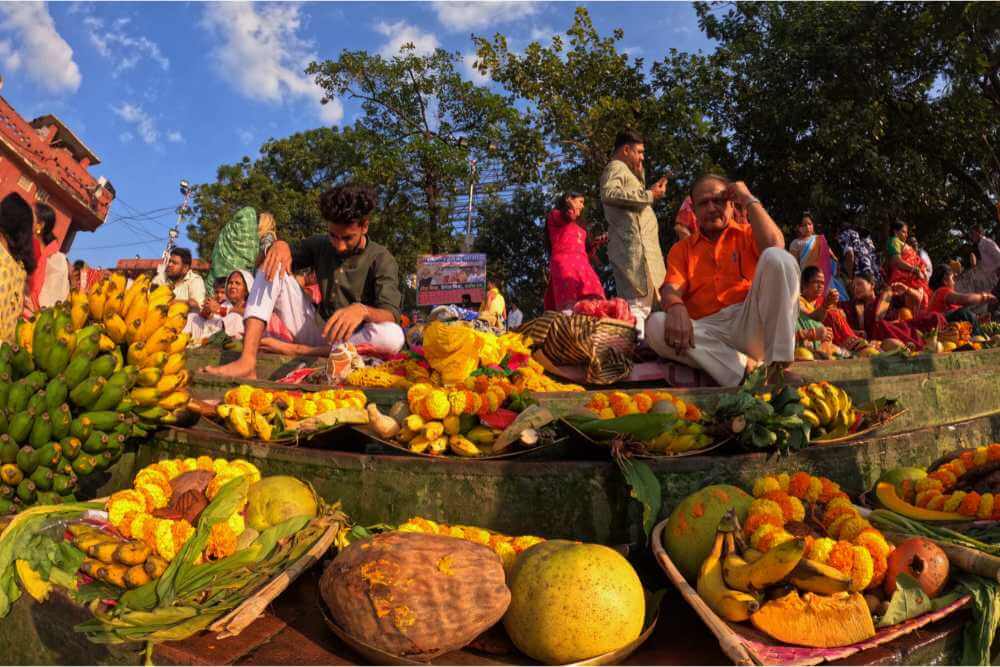
The Importance of Chhath Puja: Why Is It Celebrated?
One central question is: Chhath Puja kyu manaya jata hai? The festival holds deep religious, cultural, and social significance. Worshipping the Sun God is believed to grant health, prosperity, and well-being, and is an expression of gratitude for sustaining life on Earth.
The festival symbolizes gratitude, faith, and renewal. Families thank the Sun for the harvest, energy, and good health. The Chhath vrat katha illustrates this meaning through the story of Sita performing Chhath Puja upon returning from exile to thank the Sun God for her family’s prosperity.
Chhath Puja also stands for renewal and a fresh start in life. Fasting, rituals, and bathing are methods to cleanse both the body and the spirit. The story of Chhathi Maiya highlights purity, sacrifice, and divine blessings.
The Rituals of Chhath Puja: A Step-by-Step Guide
The fasting and rituals of Chhath Puja are observed over four days, each with its own unique activities. The festival requires discipline and devotion, as people fast and forgo comforts to honor the Sun God.
Day 1: Nahay Khay (The First Day)
On the first day, known as Nahay Khay, participants initiate purification by bathing in a river or pond, which is considered essential for both spiritual and physical cleanliness. After the bath, a simple meal is prepared, typically including rice, lentils, and vegetables. This meal marks the formal beginning of the Chhath fast. During this time, all the necessary items required for the upcoming rituals are also gathered.
Day 2: Kharna (The Second Day)
On the second day, known as Kharna, the fast becomes more intense. Devotees refrain from food and water throughout the day as an act of discipline and devotion. In the evening, the fast is broken with prasad, which typically consists of kheer (a rice pudding), thekua, and other sweet treats. These offerings are first presented to the Sun God at sunset, which marks the completion of the Kharna ritual. Afterwards, family members and neighbors share the prasad together.
Day 3: The Main Day of Chhath Puja (The Third Day)
The third day is the most significant of Chhath Puja. After fasting throughout the day, participants gather at riverbanks at sunset to present prayers to the Sun, carrying baskets filled with fruits, sugarcane, and offerings. Devotional songs and hymns echo, enriching the spiritual atmosphere.
Day 4: The Final Day (The Fourth Day)
On the final day, devotees go to the riverbank before dawn to offer their prayers and arghya to the rising Sun, as it is considered a powerful time for blessings. Standing in water, they make their offerings with deep reverence. After completing the rituals, participants return home with prasad. The fast is formally broken after sunrise by consuming the prasad and sharing it within the community, marking the end of the festival.
Best Places to Visit During Chhath Puja: Famous Chhath Puja Celebrations in India
Chhath Puja resonates with vibrant energy in many regions of India, especially Bihar, Uttar Pradesh, and Jharkhand. In Patna, lanterns flicker like stars along the Ganges, guiding thousands of worshippers in their spiritual journey. The Sonepur Mela, located near Patna, becomes a vibrant tapestry of colors and sounds. Varanasi, with its storied temples and river ghats, is where the air is thick with chants and devotion, creating an atmosphere reminiscent of ancient times. In Ranchi, amid the picturesque riverbanks, devotees express their faith with quiet determination. The timeless rituals in Chhapra and Muzaffarpur offer scenes of families united in observation, where unity and heritage truly come to life. These locations capture the true essence of devotion, heritage, and unity.
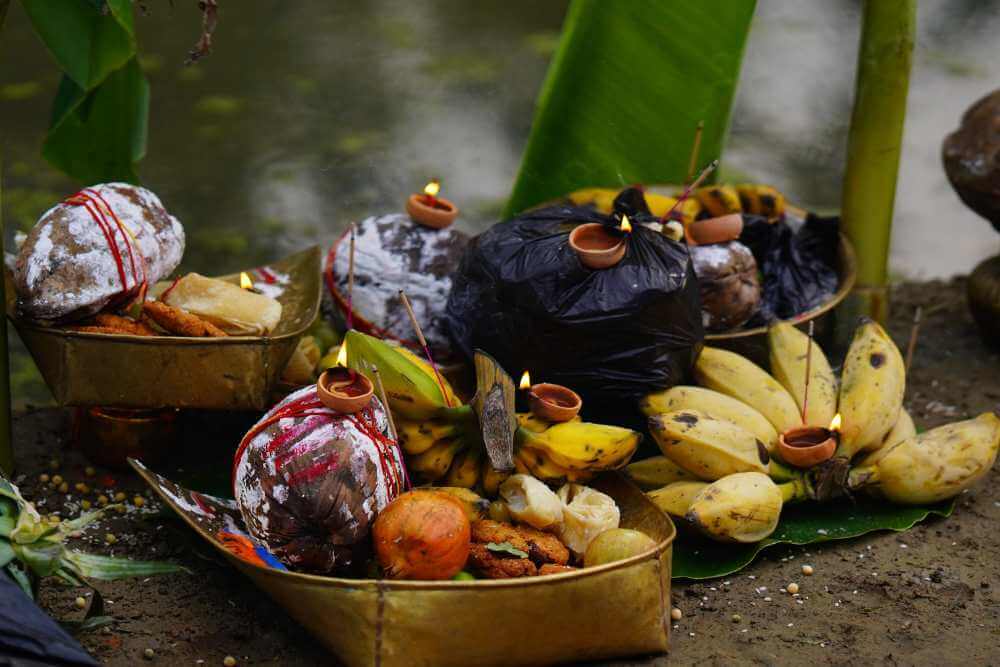
The Chhath Puja Samagri List: Essential Items for the Festival
The Chhath puja samagri list includes all the items needed to perform the various rituals throughout the four days of the festival. Some of the most essential items are:
- Thekua: A traditional sweet made from wheat flour, sugar, and ghee.
- Rice: A vital offering during the puja.
- Sugarcane: Symbolizing prosperity.
- Fruits: Such as bananas, apples, and pomegranates.
- Flowers: Especially marigolds, for offerings.
- Clay lamps: Used to light the puja.
- Prasad: Prepared offerings such as kheer, thekua, and fruits.
- Soop (Basket): To hold the offerings to the Sun.
- Ganga Jal: Holy water for purification.
These items represent the elements of nature: Earth, Water, Fire, and Air. They are essential for completing the puja.
Chhath Puja Prasad: Offering of Gratitude and Blessings
Prasad is a central part of Chhath Puja. People prepare it meticulously and offer it to the Sun God. Beloved prasad items include thekua, kheer, fruits, and sugarcane. After the puja, prasad is shared among family, friends, and the wider community. Many believe it imparts blessings of health and prosperity.
Conclusion: Chhath Puja – A Festival of Faith and Renewal
Chhath Puja is much more than a religious celebration. It marks gratitude, renewal, and faith. The festival brings families and communities together in collective devotion and festivity. From sharing prasad to singing traditional songs and performing time-honored rituals, Chhath Puja provides a profound spiritual experience.
With Chhath Puja coming up, it is a good time to think about the Sun God’s blessings and ask for health, prosperity, and happiness. Whether you are new to the festival or following a family tradition, Chhath Puja offers an opportunity for spiritual growth and renewal.
Get ready for Chhath Puja this year and remember its rich traditions and stories, from the legends to the offerings, songs, and prayers. This ancient festival brings people together in devotion to the Sun God and hope for a bright future.
